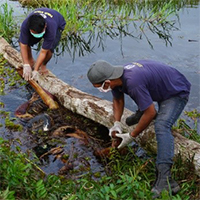Orangutan Foundation International (OFI) is greatly saddened by the passing of Norman Lear, a legendary television and film producer and writer, as well as longtime friend of OFI. Norman was… Continue reading Passing of OFI Board Member and Hollywood Legend: Norman Lear
Passing of OFI Board Member and Hollywood Legend: Norman Lear









